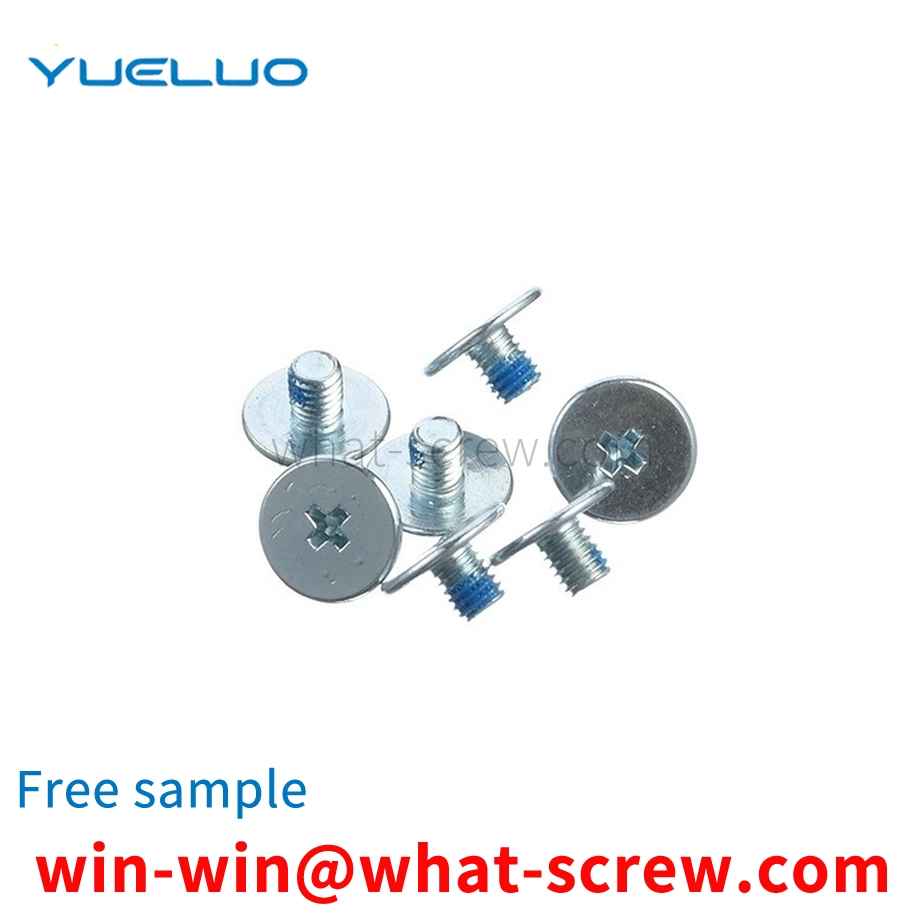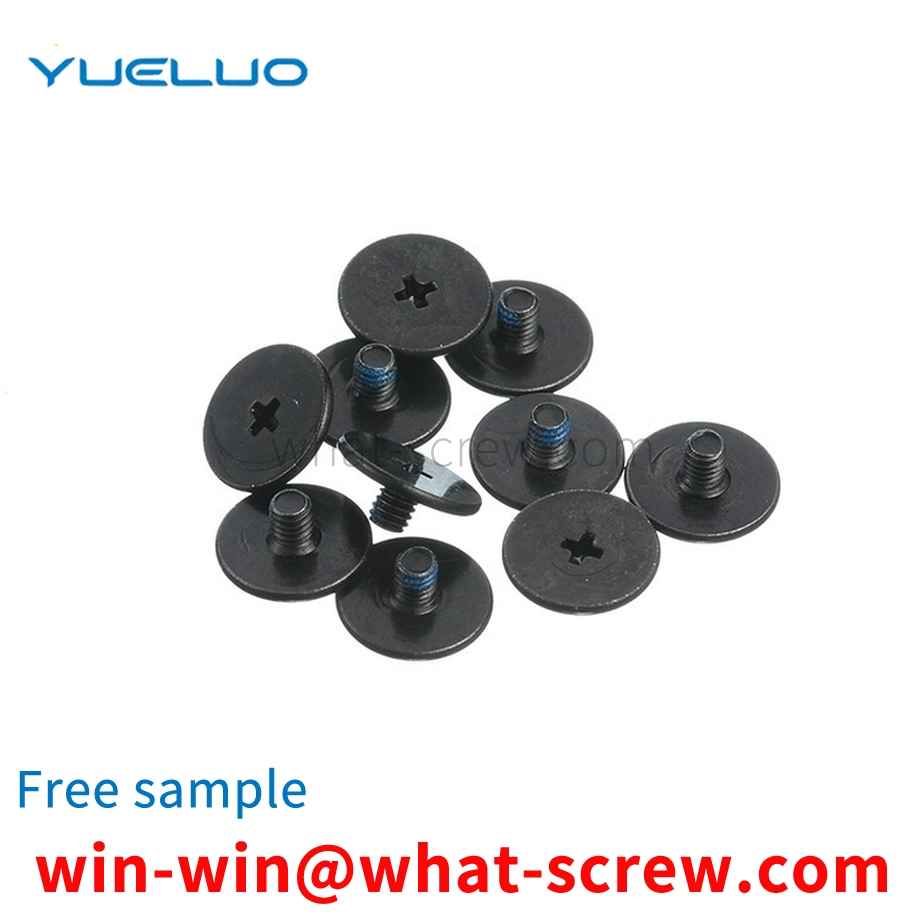Stainless steel rivet nuts are used on rail passenger cars, highway passenger cars, and ship parking. The main function is the non-structural bearing bolt connection. The main advantage of stainless steel rivet nuts is that there is no operating space on the back of the substrate, and the quality is extremely light. Today, the editor will talk about the selection principles of stainless steel rivet nuts and their uses: 1. The mechanical properties of stainless steel rivet nut materials, especially the strength requirements; Corrosion resistance requirements of materials;
The commonly used tools for fixing screws on the surface of the workpiece are electric screwdrivers and manual screwdrivers. Both of these screwdrivers manually attach the screws to the bits of the electric screwdriver or manual screwdriver, and then fix the screws on the surface of the workpiece. The screwdriver is inefficient in fixing the screw, and cannot accurately locate the screw fixing point.
The tie rod and joint of the high-voltage isolating switch are often connected by driving an elastic cylindrical pin into the connecting pin hole. The traditional assembly method is to prevent the tie rod and joint from the V-block, and hold the elastic cylindrical pin to align the connecting pin hole. Then hit it with a hammer. Since the elastic cylindrical pin is small, it is easy to injure people's hands by adopting this assembly method, and at the same time, the elastic cylindrical pin is not positioned accurately, which causes large assembly errors and low assembly efficiency.
The first is to use two identical nuts to screw on the same bolt, and add a tightening torque between the two nuts to make the bolt connection reliable. The second is a special anti-loosening nut, which needs to be used together with a kind of anti-loosening washer. The special lock nut is not a hexagonal nut, but a medium round nut. There are 3, 4, 6 or 8 notches on the circumference of the nut (depending on the size of the nut and the product series of the manufacturer). Several notches are both the focal point of the tightening tool and the snap-in of the lock washer bayonet. The third type is to drill through threaded holes from the outer surface of the nut to the inner thread surface (usually 2, which are distributed at 90 on the outer surface), which are used to screw in small-diameter countersunk head screws. The purpose is to give the thread Apply a centripetal force to prevent the locknut from loosening. The better quality lock nut sold on the market is inlaid with a small copper block that is consistent with the thread of the lock nut on the inner surface of the nut to prevent the radial jacking screw from directly contacting the locked thread and damaging the latter. . This kind of lock nut is gradually applied in the shaft end locking of rotating motion parts, such as the anti-looseness of the bearing at the mounting end of the ball screw. The fourth type of lock nut is composed of two parts, each part has staggered cams. Since the slope angle of the internal wedge design is greater than the nut angle of the bolt, this combination is tightly integrated into a whole. When vibration occurs When the lock nut is moved, the raised parts of the lock nut move with each other to generate lifting tension, so as to achieve a perfect anti-loosening effect. The fifth is structural anti-loosening. Through the design and improvement of the threaded structure, a self-locking function is obtained without the help of other external factors. Therefore, its applicability is wider than the above methods, and the requirements for the environment are also relatively high. Low. There are many types of lock nuts, such as nylon nuts and flange nuts. In short, this kind of lock nuts plays a role in preventing loosening. Twist the nut onto the screw, screw, bolt, etc., so that it will not come loose. So that they can be actively connected together, so that it is firm, and the stability can reach a high degree.
The first person to describe the spiral was the Greek scientist Archimedes (c. 287 BC - 212 BC). An Archimedes screw is a huge spiral contained in a wooden cylinder that is used to irrigate fields by raising water from one level to another. The real inventor may not be Archimedes himself. Maybe he was just describing something that already existed. It may have been designed by the skilled craftsmen of ancient Egypt for irrigation on both sides of the Nile. In the Middle Ages, carpenters used wooden or metal nails to attach furniture to wooden structures. In the 16th century, nail makers began producing nails with a helical thread, which were used to connect things more securely. That's a small step from these kinds of nails to screws. Around 1550 AD, the metal nuts and bolts that first appeared in Europe as fasteners were all made by hand on a simple wooden lathe. Screwdrivers (screw chisels) appeared in London around 1780. Carpenters have found that tightening a screw with a screwdriver holds things in place better than hitting with a hammer, especially with fine-grained screws. In 1797, Maudsley invented the all-metal precision screw lathe in London. The following year, Wilkinson built a nut and bolt making machine in the United States. Both machines produce universal nuts and bolts. Screws were quite popular as fixings because an inexpensive method of production had been found at that time. In 1836, Henry M. Philips applied for a patent for a screw with a cross recessed head, which marked a major advance in screw base technology. Unlike traditional slotted head screws, Phillips head screws have the edge of the head of the Phillips head screw. This design makes the screwdriver self-centered and not easy to slip out, so it is very popular. Universal nuts and bolts can connect metal parts together, so by the 19th century, the wood used to make machines to build houses could be replaced by metal bolts and nuts. Now the function of the screw is mainly to connect the two workpieces together and play the role of fastening. The screw is used in general equipment, such as mobile phones, computers, automobiles, bicycles, various machine tools and equipment, and almost all machines. need to use screws. Screws are indispensable industrial necessities in daily life: extremely small screws used in cameras, glasses, clocks, electronics, etc.; general screws for televisions, electrical products, musical instruments, furniture, etc.
We have many years of experience in the production and sales of screws, nuts, flat washers, etc. The main products are: mushroom round cup dome head screws, three-in-one bolts, standard spring washers, thin button bolts and other products, we can provide you with suitable products for you. Fastener Solutions.



















 Service Hotline
Service Hotline




